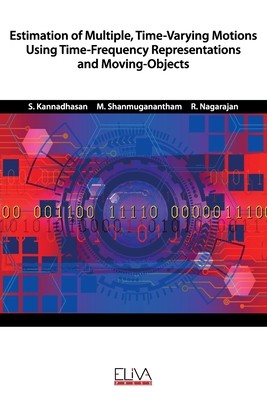
- We will send in 10–14 business days.
- Author: M Shanmuganantham
- Publisher: Eliva Press
- ISBN-10: 1952751918
- ISBN-13: 9781952751912
- Format: 15.2 x 22.9 x 0.3 cm, softcover
- Language: English
- SAVE -10% with code: EXTRA
Estimation of Multiple, Time-Varying Motions Using Time-Frequency Representations and Moving-Objects (e-book) (used book) | bookbook.eu
Reviews
Description
A Wireless Sensor Network (WSN) comprises a collection of sensor nodes networked for applications like surveillance, battlefield, monitoring of habitat, etc. Nodes in a WSN are usually highly energy-constrained and expected to operate for long periods from limited on-board energy reserves. When a node transmits data to a destination node the data is overheard by the nodes that are in the coverage range of the transmitting node or the forwarding node. Due to this, the individual nodes might waste their energy in sensing data that are not destined to it and as a result the drain in the energy of the node is more resulting in much reduced network life time. As power is a limiting factor in a WSN, the major challenge in deploying a WSN is to enhance the network life time. So, it becomes inevitable to devise an efficient method of conserving the power. In this paper, a novel algorithm, Signed Graph based Adaptive transmission Power (SGATP) is developed to avoid redundancy in sensing the data thereby enhancing the life time of the network. The concept of adapting the transmission power based on the distance of the next neighbor is proposed while a node communicates with the Cluster Head during Intrusion Detection. The simulation results show that the network life time is greatly improvised by the proposed method.
EXTRA 10 % discount with code: EXTRA
The promotion ends in 19d.18:08:21
The discount code is valid when purchasing from 10 €. Discounts do not stack.
- Author: M Shanmuganantham
- Publisher: Eliva Press
- ISBN-10: 1952751918
- ISBN-13: 9781952751912
- Format: 15.2 x 22.9 x 0.3 cm, softcover
- Language: English English
A Wireless Sensor Network (WSN) comprises a collection of sensor nodes networked for applications like surveillance, battlefield, monitoring of habitat, etc. Nodes in a WSN are usually highly energy-constrained and expected to operate for long periods from limited on-board energy reserves. When a node transmits data to a destination node the data is overheard by the nodes that are in the coverage range of the transmitting node or the forwarding node. Due to this, the individual nodes might waste their energy in sensing data that are not destined to it and as a result the drain in the energy of the node is more resulting in much reduced network life time. As power is a limiting factor in a WSN, the major challenge in deploying a WSN is to enhance the network life time. So, it becomes inevitable to devise an efficient method of conserving the power. In this paper, a novel algorithm, Signed Graph based Adaptive transmission Power (SGATP) is developed to avoid redundancy in sensing the data thereby enhancing the life time of the network. The concept of adapting the transmission power based on the distance of the next neighbor is proposed while a node communicates with the Cluster Head during Intrusion Detection. The simulation results show that the network life time is greatly improvised by the proposed method.


Reviews